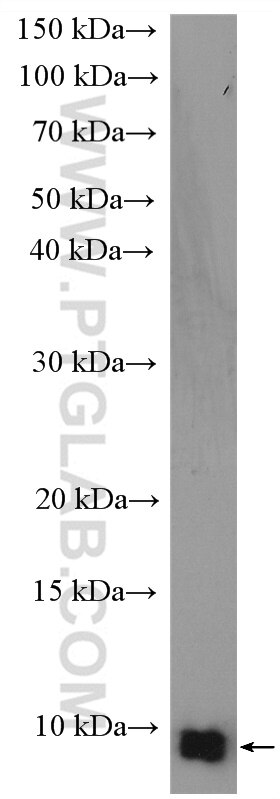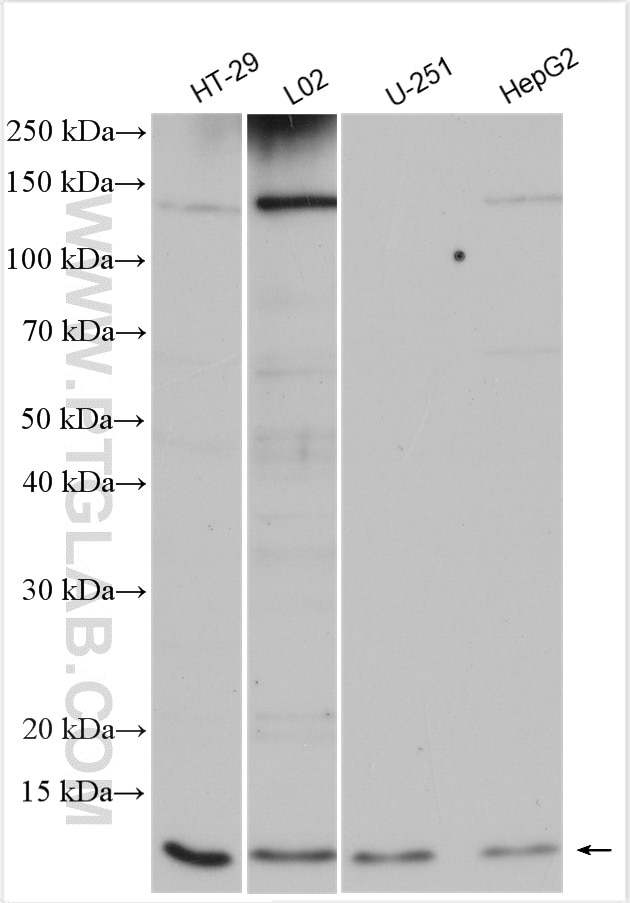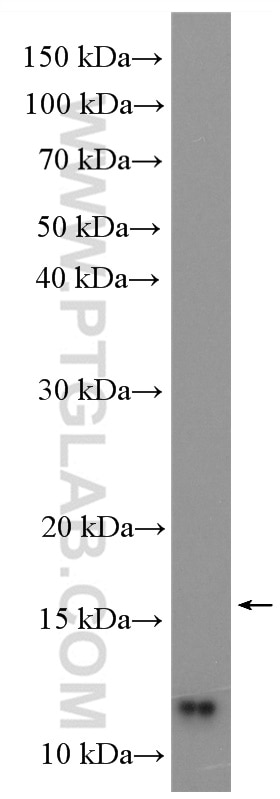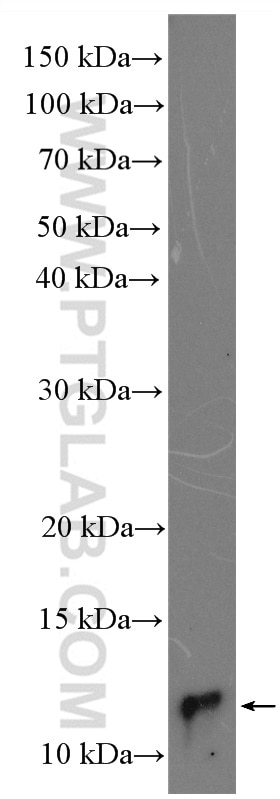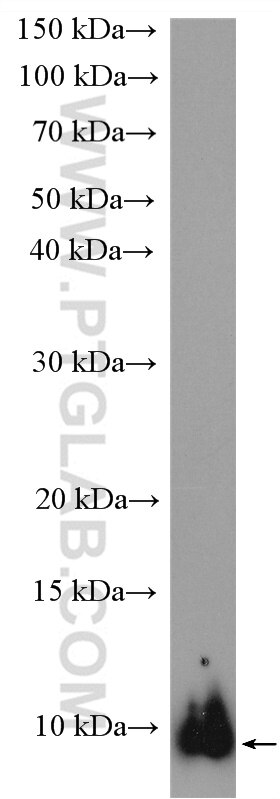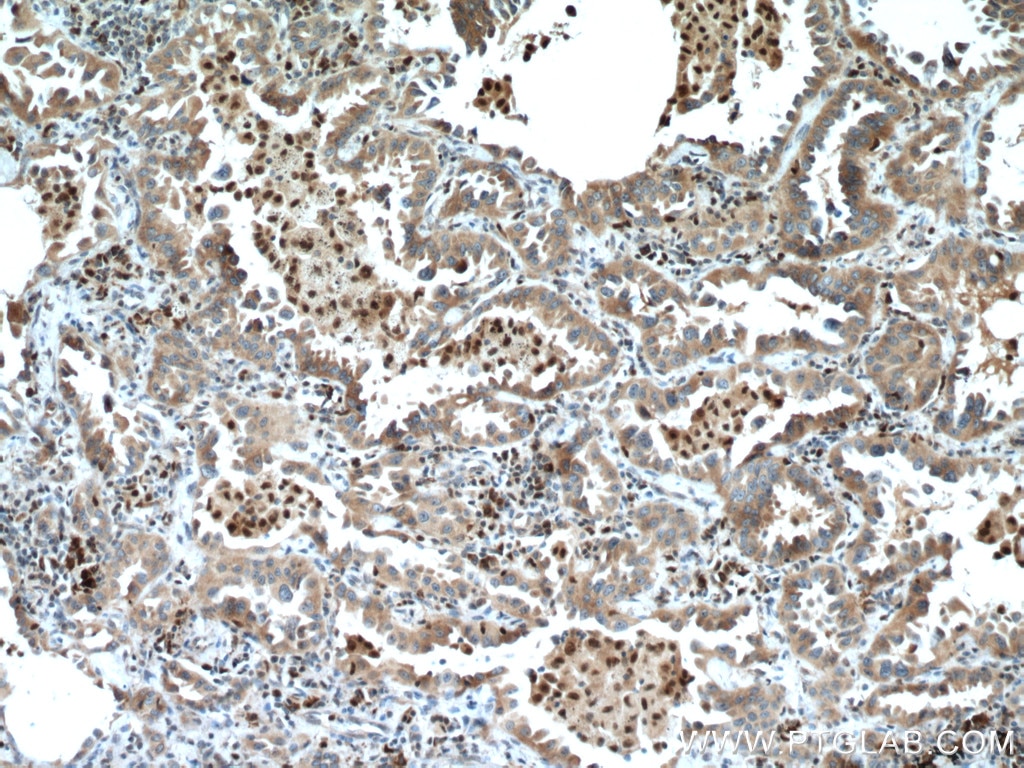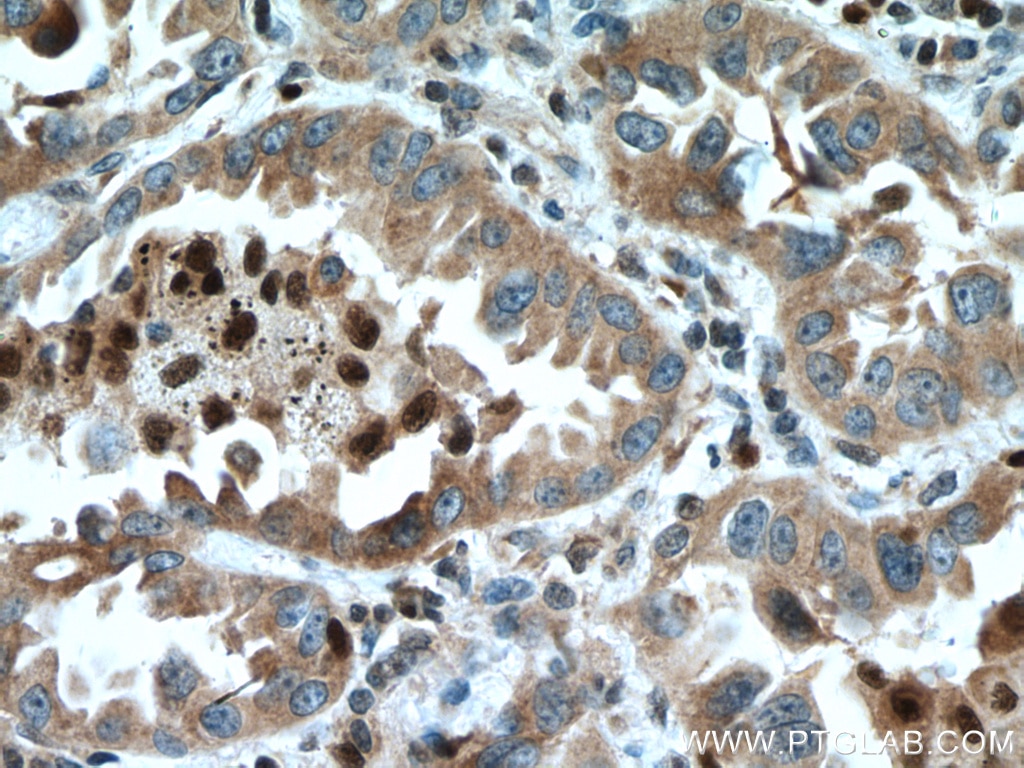UFM1 Polyklonaler Antikörper
UFM1 Polyklonal Antikörper für WB, IHC, ELISA
Wirt / Isotyp
Kaninchen / IgG
Getestete Reaktivität
human, Maus
Anwendung
WB, IHC, ELISA
Konjugation
Unkonjugiert
Kat-Nr. : 15883-1-AP
Synonyme
Geprüfte Anwendungen
| Erfolgreiche Detektion in WB | HT-29-Zellen, HEK-293-Zellen, HepG2-Zellen, L02-Zellen, Mauslebergewebe, Mauslungengewebe, U-251-Zellen |
| Erfolgreiche Detektion in IHC | humanes Lungenkarzinomgewebe Hinweis: Antigendemaskierung mit TE-Puffer pH 9,0 empfohlen. (*) Wahlweise kann die Antigendemaskierung auch mit Citratpuffer pH 6,0 erfolgen. |
Empfohlene Verdünnung
| Anwendung | Verdünnung |
|---|---|
| Western Blot (WB) | WB : 1:500-1:1000 |
| Immunhistochemie (IHC) | IHC : 1:50-1:500 |
| It is recommended that this reagent should be titrated in each testing system to obtain optimal results. | |
| Sample-dependent, check data in validation data gallery | |
Veröffentlichte Anwendungen
| WB | See 5 publications below |
Produktinformation
15883-1-AP bindet in WB, IHC, ELISA UFM1 und zeigt Reaktivität mit human, Maus
| Getestete Reaktivität | human, Maus |
| In Publikationen genannte Reaktivität | human |
| Wirt / Isotyp | Kaninchen / IgG |
| Klonalität | Polyklonal |
| Typ | Antikörper |
| Immunogen | UFM1 fusion protein Ag8667 |
| Vollständiger Name | ubiquitin-fold modifier 1 |
| Berechnetes Molekulargewicht | 85 aa, 9 kDa |
| Beobachtetes Molekulargewicht | 9-12 kDa |
| GenBank-Zugangsnummer | BC005193 |
| Gene symbol | UFM1 |
| Gene ID (NCBI) | 51569 |
| Konjugation | Unkonjugiert |
| Form | Liquid |
| Reinigungsmethode | Antigen-Affinitätsreinigung |
| Lagerungspuffer | PBS with 0.02% sodium azide and 50% glycerol |
| Lagerungsbedingungen | Bei -20°C lagern. Nach dem Versand ein Jahr lang stabil Aliquotieren ist bei -20oC Lagerung nicht notwendig. 20ul Größen enthalten 0,1% BSA. |
Hintergrundinformationen
UFM1 (Ubiquitin-fold modifier 1) is a ubiquitin-like protein covalently conjugated with intracellular proteins through UFMylation (modification by UFM1), a process similar to ubiquitylation (PMID: 38141606). UFM1 is conjugated to its target proteins by E1-like activating enzyme UBE1DC1 and E2-like conjugating enzyme UFC1 in a manner analogous to ubiquitylation (PMID: 28234446; 33066455). At the molecular level, UFMylation is an important mediator of the protein function. Dysregulation of the UFM1 system, e.g., the knockout of UFMylation components, disturbs proteome homeostasis and triggers endoplasmic reticulum stress. Such changes are linked to developmental disorders, tumorigenesis, tissue injury, inflammation, and several hereditary neurological syndromes (PMID: 36932998). Western blot images showed that bands larger than 100kd may be proteins modified by UFM1.
Protokolle
| PRODUKTSPEZIFISCHE PROTOKOLLE | |
|---|---|
| WB protocol for UFM1 antibody 15883-1-AP | Protokoll herunterladen |
| IHC protocol for UFM1 antibody 15883-1-AP | Protokoll herunterladenl |
| STANDARD-PROTOKOLLE | |
|---|---|
| Klicken Sie hier, um unsere Standardprotokolle anzuzeigen |
Publikationen
| Species | Application | Title |
|---|---|---|
Mol Cell An Epstein-Barr virus protein interaction map reveals NLRP3 inflammasome evasion via MAVS UFMylation | ||
Mol Cell Proteomics Quantification Quality Control Emerges as A Crucial Factor to Enhance Single Cell Proteomics Data Analysis | ||
Autophagy VCP/p97 UFMylation stabilizes BECN1 and facilitates the initiation of autophagy | ||
